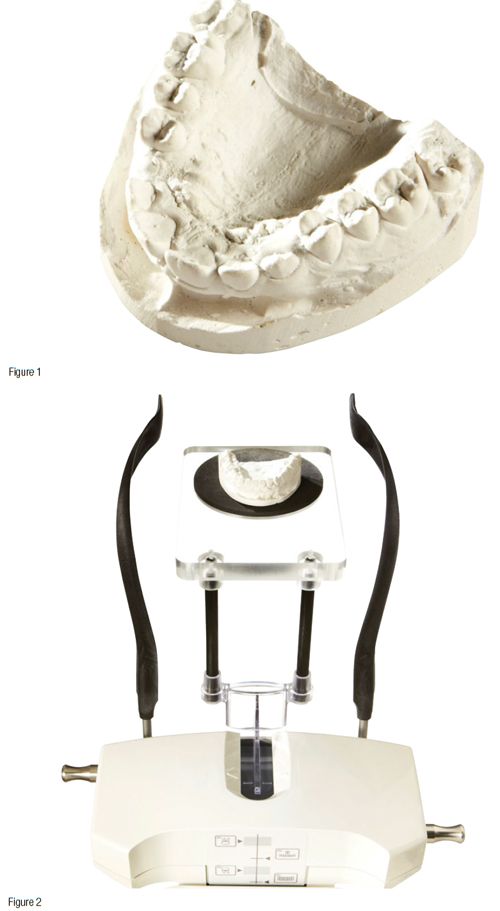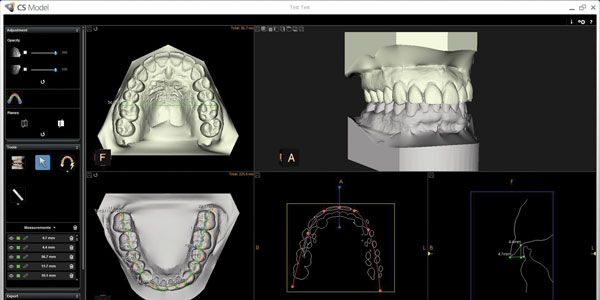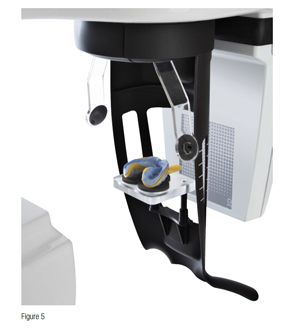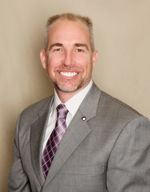Matt Hendrickson discusses a money- and space-saving alternative to stone models — going digital
In spite of the popularity of intraoral scanners that eliminate the use of alginate and plaster models, traditional impressions continue to be the standard when it comes to taking initial orthodontic records for most practices. And it’s been the standard for years — and years. All those years have added up to boxes of models (Figure 1) tucked away, wasting valuable space. In fact, there’s a minority of practices that have stopped taking impressions as part of the initial record altogether — arguing that it’s simply not worth the hassle of pouring up models only to have them gather dust in a corner. That, of course, is an extreme measure; however, there are other ways for practices to handle their backlog of stone models: digitizing existing models (Figure 2).
 Orthodontists have been hearing it for a decade now — “go digital.” For some, that might mean using an intraoral scanner. Creating a model as part of the initial record is highly recommended by the American Board of Orthodontics, but it doesn’t make it any less messy or time-consuming. Pouring up models, trimming, and polishing them for patient presentation is a hassle. Digital impressions captured with an intraoral scanner can eliminate those steps. With that in mind, “going digital” seems like common sense, and many orthodontic practices have started to embrace that option. However, it doesn’t undo years of stone models that practices are still obligated to maintain.
Orthodontists have been hearing it for a decade now — “go digital.” For some, that might mean using an intraoral scanner. Creating a model as part of the initial record is highly recommended by the American Board of Orthodontics, but it doesn’t make it any less messy or time-consuming. Pouring up models, trimming, and polishing them for patient presentation is a hassle. Digital impressions captured with an intraoral scanner can eliminate those steps. With that in mind, “going digital” seems like common sense, and many orthodontic practices have started to embrace that option. However, it doesn’t undo years of stone models that practices are still obligated to maintain.
 It varies state by state, but once a stone model becomes part of a patient’s record, the practice must keep it for an average of 7 years after the patient reaches the age of majority. Consequently, if a doctor finishes with a patient when he/she is 13 or 14, the practice will have to maintain the model for at least 10 years. Most offices keep them even longer than required. Herein lies the problem; rooms full of models that must be categorized and documented. Typically, they’ll be put in a box, labeled with a number, and then that number is included in the patient’s records. This leads to storage space and filing issues. Busy or long-standing practices often end up renting an offsite storage facility to save office space, which of course, requires a monthly fee.
It varies state by state, but once a stone model becomes part of a patient’s record, the practice must keep it for an average of 7 years after the patient reaches the age of majority. Consequently, if a doctor finishes with a patient when he/she is 13 or 14, the practice will have to maintain the model for at least 10 years. Most offices keep them even longer than required. Herein lies the problem; rooms full of models that must be categorized and documented. Typically, they’ll be put in a box, labeled with a number, and then that number is included in the patient’s records. This leads to storage space and filing issues. Busy or long-standing practices often end up renting an offsite storage facility to save office space, which of course, requires a monthly fee.
This brings us back to digitizing stone models. Practices could send models to a lab to be digitized, but there’s a cost involved — $10-$30 per model — as well as the price of shipping and the risk of the models breaking en route. Practices could also purchase their own desktop scanner, but who wants a piece of equipment that takes up counter space and does only one thing? Or they could take advantage of a piece of equipment that’s already in their practices: the extraoral imaging system. These days, as cone beam computed tomography (CBCT) makes its way into orthodontics, an imaging system must do more than just capture pans and cephs. Instead, a multi-functional system, such as the CS 8100SC 3D extraoral imaging system or CS 9300C system, gives orthodontists everything they could need in one unit: 2D imaging, cephalometric imaging, CBCT, and model and impression scanning.

 In the same way cephs and pans are easily taken, scanning existing models with the CS 8100SC 3D or CS 9300C can be accomplished by any staff member with the push of a button and immediately uploaded to the patient’s file within practice management software. In addition to being able to scan existing models, traditional impressions (Figure 3) can also be scanned, so there’s no need to even pour up a model. If an impression is scanned, software automatically mounts it on a polished base and aligns the occlusion (Figure 4). The model can then be easily manipulated in 3D for analysis and case presentation, or even sent digitally to a lab for appliance fabrication. Digital impressions and models not only save on space, but digital files are also easier to pull up if necessary, rather than tracking down a random storage box. Of course, scanning impressions (Figure 5) and models in-office with existing equipment means there’s no cost per scan, and the model can be safely destroyed once it’s digitized.
In the same way cephs and pans are easily taken, scanning existing models with the CS 8100SC 3D or CS 9300C can be accomplished by any staff member with the push of a button and immediately uploaded to the patient’s file within practice management software. In addition to being able to scan existing models, traditional impressions (Figure 3) can also be scanned, so there’s no need to even pour up a model. If an impression is scanned, software automatically mounts it on a polished base and aligns the occlusion (Figure 4). The model can then be easily manipulated in 3D for analysis and case presentation, or even sent digitally to a lab for appliance fabrication. Digital impressions and models not only save on space, but digital files are also easier to pull up if necessary, rather than tracking down a random storage box. Of course, scanning impressions (Figure 5) and models in-office with existing equipment means there’s no cost per scan, and the model can be safely destroyed once it’s digitized.
Orthodontics, like all dental specialties, is transitioning more and more toward a digital workflow. Whether doctors fully embrace digital impressions with an intraoral scanner or aren’t quite ready to take the leap, there’s no denying that the boxes, shelves, and storage units full of stone models aren’t just going to disappear because the march of progress declares the future is digital. Digitizing stone models with a multi-functional extraoral imaging system, such as the CS 8100SC 3D or the CS 9300C, can save storage space in your practice and cut back on the costs of offsite storage or having a lab digitize the models. In addition to saving space, digital models can be quickly pulled up on a computer and impress patients during case presentation. So don’t erase years of stone models, embrace years of stone models in a digital format.
Stay Relevant With Orthodontic Practice US
Join our email list for CE courses and webinars, articles and mores

 Matt Hendrickson has spent more than 20 years in the industry. He is currently the US&C orthodontic director for Carestream Dental. Prior to joining Carestream Dental, Hendrickson founded and served as president of Integrated Dental Solutions, and he also has held a variety of roles within dental practices.
Matt Hendrickson has spent more than 20 years in the industry. He is currently the US&C orthodontic director for Carestream Dental. Prior to joining Carestream Dental, Hendrickson founded and served as president of Integrated Dental Solutions, and he also has held a variety of roles within dental practices.
